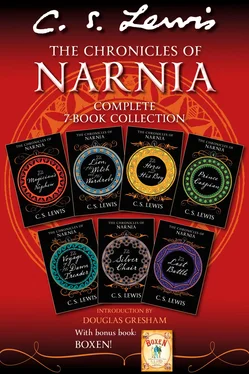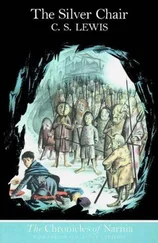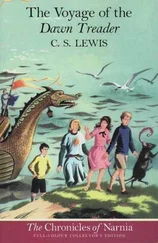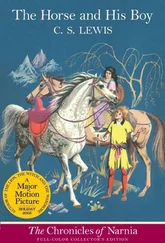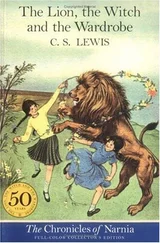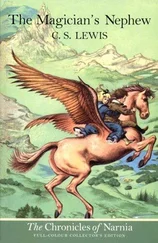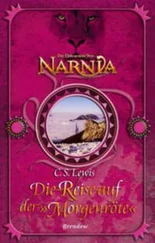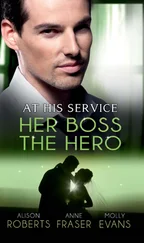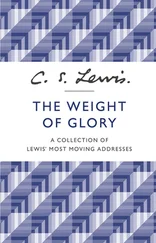5. When was the first time you read a Narnia book, and what did you think of it? How did you come to read the other books?
I first encountered Narnia when my mother read The Lion, the Witch and the Wardrobe to me, in my bedroom in our huge old house near Staatsburg in upstate New York, chapter by chapter, one per night, as a bedtime story. Neither of us had yet met Jack, of course. I was about six years old then, I think, and I was fascinated and enthralled from the first words. Now, more than sixty years later, I still am. As soon as another Narnia book became available, that too was read to me, and at some stage along my journeys into Narnia, I learned to read for myself, the process accelerated by my need to return to Narnia again and again, and I began to read the books over and over again; I still do.
6. What other books did you read as a child? Were they books that Jack recommended you read? How do they contribute to your experience of Narnia?
Wow, that is a big question! Almost everything I read as a young child was recommended by either my mother, Jack, or Warnie. Later, of course, I began to explore the shelves at will. The Kilns was full of books. Whenever the weather was inclement, which (despite some halcyon days in summer and astonishingly beautiful days of frost or snow in winter) seemed to be a lot of the time in Oxford, I would be found in either the Common Room or on the dining room sofa deep in a book. I read all I could get my hands on of Mark Twain, John Buchan, E. Nesbit, Jack London, Charles Dickens, Ernest Thompson Seton, George MacDonald, Roger Lancelyn Green, John Galsworthy, and many others. The books that Mother, Jack, and Warnie recommended always fascinated, and nothing was forbidden, nothing censored. I read the complete works of William Shakespeare before I was fourteen (not without some considerable effort, I confess). I discovered that the wisdom of the world, and a great deal of its folly also, is to be found in the pages of books. And throughout it all, I kept returning to old favorites again and again: The Chronicles of Narnia and The Lord of the Rings and later Till We Have Faces. The more I read of other writers, the more I discovered how good the tales of Narnia really are.
7. Do you know what books Jack may have read as a child?
Many of those same authors I have enumerated above. He recommended to me those books that he had loved as a child, as did Mother and Warnie.
8. Do you have a favorite title in the Narnia series? Did Jack? If so, which and what makes it stand out for either of you?
For me, it is always whichever of them I am reading at the time that question is asked. But Jack most liked The Last Battle, and for very simple reasons. Contrary to some theories that have recently been bandied about, Jack never intended, nor set out, to write a series of books about Narnia. When he wrote The Lion, the Witch and the Wardrobe and sent it off to Geoffrey Bles (its first publisher), he thought he had written a one-off novel for children and that would be the end of it. But quite soon Prince Caspian demanded his attention and he wrote that one too, then The Dawn Treader climbed up over the horizon of the Narnia Eastern Sea and Jack had to write that adventure too, and so it went on. At last, Jack, determinedly and with celestial permission from his Muse, wrote The Last Battle, in which the heaven of Narnia at last became Heaven, and he sent it off to Spencer Curtis Brown, his then literary agent, with a sigh of relief. This work, which had grown of itself and which he had never intended, was rounded off and finished. Jack liked The Last Battle the best because its culmination was his vision of True Heaven imposed on a Narnian context, Narnia itself being a shadow of his childhood vision of heaven. In other words, true Narnia became to Narnia what Jack imagined Heaven will be to Earth. And also he liked it because it was his last Narnian battle.
9. Who were some of your favorite Narnians growing up?
Apart from Aslan, whom everyone has to love—but from a safe distance in most cases—Puddleglum is one of my favorites because he brings back to me a man whom I loved a great deal and who had helped me through so many childish dilemmas and sorrows. Reepicheep is another for his valor and purity. Among the Knights of King Arthur’s Court, while my schoolmates all wanted to be Launcelot, I always wanted to be Galahad (still do, I suppose), and Reepicheep is that pure Knight of Narnia, much like Galahad was the pure Knight of King Arthur’s court. Shasta/Cor, Prince of Archenland, appeals to me greatly, too.
10. You’ve mentioned Frederick Calcutt Paxford twice now, the man after whom Puddleglum the Marsh-wiggle is modeled, and his impact on you. Can you tell us more about him? Was he like Puddleglum? What was his relationship with Jack? With you?
Fred was exactly like Puddleglum in character, the outwardly ever- pessimistic covert optimist, although the two have no physical resemblance at all. Fred was heavyset and stout and of average height; Puddleglum very tall, very thin. He was a veteran of the horror of the trenches of the First World War and had suffered from a poison gas attack. He and Jack were in some ways kindred spirits, both possessing in great measure the virtues of honesty and kindness. Fred was a great friend to me at a time in my life when I most needed one. We became friends out in the “gyaarden,” as Fred pronounced the word, of The Kilns and soon discovered that we shared common interests. He taught me things that would perhaps be good-naturedly frowned upon by Jack and Warnie, like how to set snares for rabbits, how to maze a hare, how to shoot straight with a 12-bore shotgun, how to plough a straight furrow with a horse-drawn plough, and innumerable other things of more value than almost anything I ever learned at any school. I was weeping softly beneath the old weeping willow tree out by The Kilns themselves the day my mother died when Fred joined me, laid his massive arm gently across my shoulders, and held me to him. “Doant cry, son,” he said softly; but the effect was spoiled somewhat by the tears I saw running down his face. Fred was a good friend.
11. Were there other characters based on people you and Jack knew? Did those people know they inspired these great books? How are the characters similar to the people who inspired them?
Jack had an almost uncanny talent for writing unpleasant characters who turned out to be the living images of people he was about to meet [or his readers are about to meet]. He always said that his villains were modeled on himself. There were other characters that he drew from friends and acquaintances, but he was always very careful not to let it become obvious, so he would mix and match his characters’ personalities and appearances to avoid anyone ever being able to recognize them. He couldn’t fool Warnie, however; and sometimes Warnie would tell me that “so and so was modeled on an old fool at Merton” or wherever. But Jack never gave a character taken from someone he knew an appearance in any way similar to that person, nor even a similar profession. Jack protected his models.
12. What made C. S. Lewis decide to write The Magician’s Nephew well after writing and publishing The Lion, the Witch and the Wardrobe ? Why was the series reordered to put The Magician’s Nephew first?
Jack listened to his Muse and also to his audience. People were asking how it all came to be, why and how Narnia had come into existence in the first place. But also I think that he knew that he would not be allowed or able to end Narnia until he had first begun it. As for the “reordering” of Narnia, the putting of numbers on the spines of books was an American idea and one which I felt was superfluous, feeling that we should all be allowed to read the books in any order we like (and I do), but the first American publisher set the precedent. I asked Jack what order the books should be read in when The Magician’s Nephew had appeared and The Last Battle finally came out. He told me that his preference was for them to be read in order of Narnian chronology but that it didn’t really matter. I agreed completely, and many years later when HarperCollins took over the worldwide English language publication of the books, they decided to retain numbers on the spines and asked me what order they should be in. I told them to go with what Jack himself preferred. And they did!
Читать дальше
